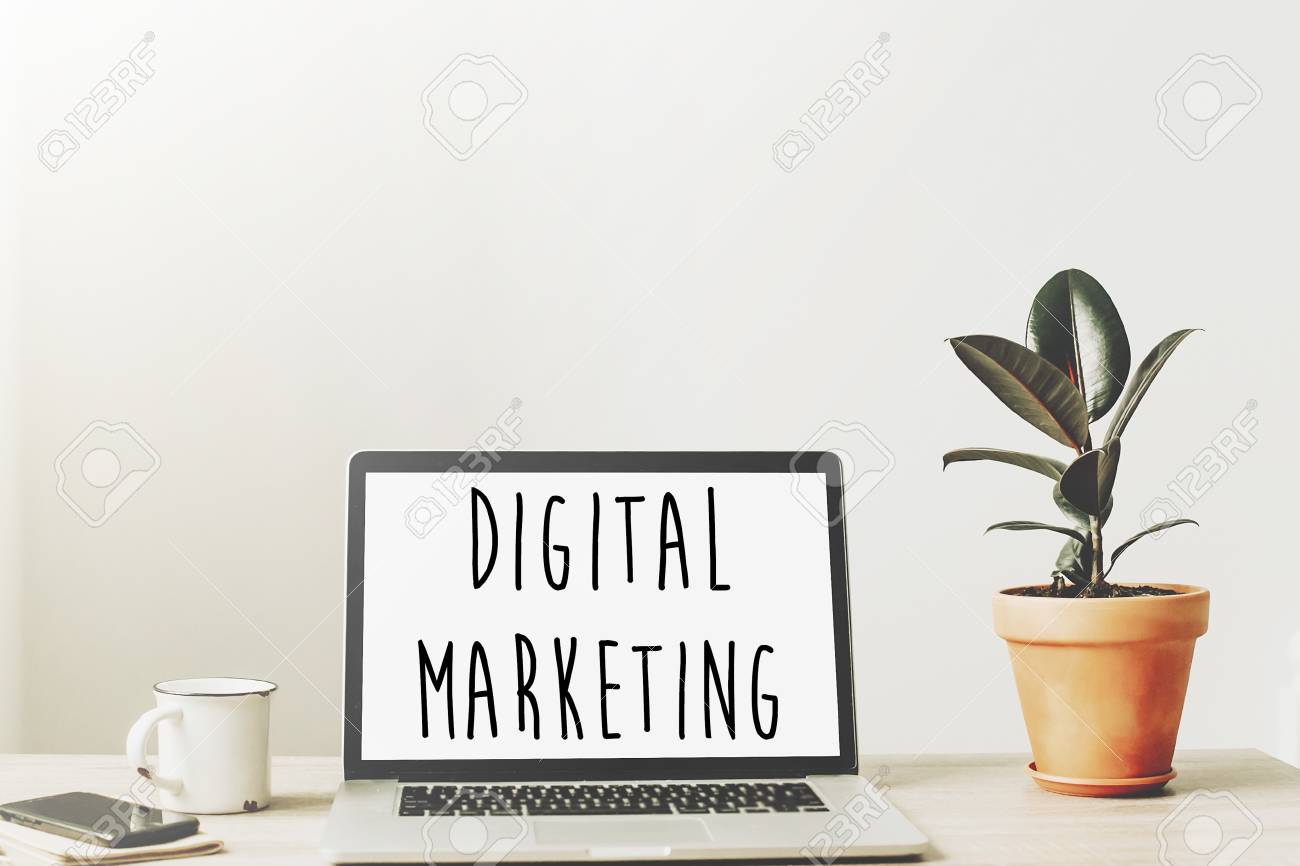Are you looking to master digital marketing? If so, you’re in the right place! Here are 10 easy steps that will help you to become an expert in digital marketing. By following these steps, you will learn how to create and implement effective digital marketing strategies that will help you reach your business goals. With these tips, you’ll be able to maximize your digital marketing efforts and increase your ROI. Let’s get started!
Step 1: Develop Your Digital Marketing Strategy
Developing an effective digital marketing strategy is essential for any business that wants to succeed in the digital world. Digital marketing involves the use of various channels such as social media, search engines, websites, and more to reach out to potential customers and promote your business. It’s important to take the time to develop a digital marketing strategy that works for your business.
The first step in developing a digital marketing strategy is to identify your target audience. This will help you determine the type of content and channels that you should use to reach out to your potential customers. You should also determine the budget that you are willing to spend on digital marketing so that you can ensure that you are maximizing your marketing efforts.
Next, you should create content that is relevant to your target audience and is engaging to them. You should also ensure that your content is optimized for search engines so that it can rank higher in search engine results. Additionally, you should identify the channels that you will use to reach your target audience. This could include social media, webinars, email campaigns, and more.
Finally, you should track the results of your digital marketing efforts to determine what works and what doesn’t. You should also adjust your strategy as needed to ensure that you are delivering results. By following these steps, you can ensure that you are developing a successful digital marketing strategy that will help your business succeed in the digital world.
Step 2: Define Your Target Audience
When it comes to digital marketing, defining your target audience is one of the most important steps. Knowing who you are trying to reach will help you create effective content and campaigns that will be most relevant and meaningful to them. It can be difficult to know where to start, so here are some tips to help you define your target audience.
First, consider your existing customer base. Who are your current customers and what do they have in common? What do they need from your product or service? This will help you identify patterns and create a profile of your ideal customer.
Next, think about your target audience’s demographics. What age group, gender, location, and income bracket do they fall under? Understanding your customer’s demographic information will help you tailor your messaging to them.
Finally, consider your target audience’s interests and lifestyle. What are their hobbies, interests, and values? What motivates them? Knowing this will help you create content that resonates with them and makes them more likely to engage with your brand.
Defining your target audience is an essential step in any successful digital marketing strategy. By taking the time to understand who they are, what they need, and what motivates them, you can create content that is relevant and meaningful to them.
Step 3: Set Your Digital Marketing Goals
Setting digital marketing goals is essential for any successful digital marketing campaign. It’s important to have measurable and attainable goals that can be realistically achieved. These goals should also be in line with your overall business goals and objectives. When setting digital marketing goals, you should consider the following:
1. What do you want to achieve?
Your goals should be SMART (Specific, Measurable, Attainable, Relevant, and Time-bound). Think about what you want to accomplish and set measurable goals that are achievable within a certain timeframe.
2. Who is your target audience?
Identify your target audience and create goals that cater to their needs. This will help you create campaigns that are more effective and efficient.
3. What resources do you have?
Make sure that the goals you set are in line with the resources you have available. You don’t want to set goals that are too ambitious and not achievable with the resources you have.
By setting digital marketing goals, you can measure the success of your campaigns and make adjustments accordingly. This will help you optimize your campaigns and achieve better results.
Step 4: Choose the Digital Marketing Channels That Will Best Reach Your Audience
Choosing the right digital marketing channels to reach your target audience is essential if you want to maximize the success of your digital marketing campaign. By selecting the channels that best align with your goals and objectives, you can ensure that your messages are reaching the right people and resonating with them.
When choosing digital marketing channels, it’s important to consider the various audiences you’re trying to reach. Different platforms and channels will be better suited for different audiences, so it’s important to assess which platforms are most likely to reach the people you’re targeting. You should also consider the type of content you’re creating and which channels are best suited for it.
It’s also important to consider the cost and time associated with each channel. Not all channels will be equally effective or feasible for your budget, so it’s important to assess which channels provide the best return on investment for the time and money you’re investing.
By carefully considering your audience, content, and budget when choosing digital marketing channels, you can ensure that your digital marketing efforts are successful and that you’re reaching the right people with the right message.
Step 5: Create Engaging Digital Content
Creating engaging digital content is essential for any successful digital marketing campaign. Digital content is the cornerstone of any online marketing effort, and it should be planned, created, and distributed with the goal of engaging and converting your target audience.
When creating engaging digital content, it’s important to remember that your content should be tailored to the specific audience you’re trying to reach. Different types of content are more effective for different types of audiences, so keep this in mind when planning your content strategy.
When creating your content, make sure it’s unique, informative, and entertaining. Keep your content up-to-date, and add visuals to make it more engaging. Additionally, be sure to optimize your content for SEO, and use keywords and phrases that your target audience is likely to search for.
Finally, make sure you distribute your content on the right platforms. Different platforms are better for different types of content, so be sure to research the best platform for each piece of content you create.
Creating engaging digital content is essential for any successful digital marketing campaign, and it takes careful planning and effort. By following these steps, you can ensure that your digital content is effective and engaging for your target audience.
Step 6: Optimize Your Content for Search Engines
Optimizing your content for search engines is an essential part of digital marketing. Search engine optimization (SEO) helps to ensure that your content reaches the right audiences. Step 6 of the digital marketing process involves optimizing your content for search engines.
To optimize your content for search engines, you should ensure that your content contains relevant and targeted keywords, as well as relevant meta tags and descriptions. You should also use appropriate internal and external linking to boost your rankings in search engine results. Additionally, you should ensure that your content is well-organized, easy to navigate, and provides a good user experience.
Finally, you should keep track of the performance of your content and make adjustments as needed. This can include making changes to the structure and content of your website, as well as tracking how your content is performing in search results. By taking the time to optimize your content for search engines, you can increase your visibility and reach more potential customers.
Step 7: Monitor Your Digital Marketing Performance
Monitoring your digital marketing performance is essential to ensure your efforts are producing the desired results. With the help of analytics and reporting tools, you can measure the effectiveness of your campaigns and track key performance metrics. Tracking these metrics allows you to identify which strategies are working and which ones need improvement. Using this data, you can make informed decisions about where to invest your time and resources. Additionally, monitoring your performance helps you stay ahead of the competition and adjust your strategies as needed. By regularly reviewing your digital marketing performance, you can ensure your campaigns are as effective as possible.
Step 8: Leverage Automation for Your Digital Marketing
Step 8 of a successful digital marketing strategy is to leverage automation. Automation is essential to any digital marketing strategy as it allows you to reduce the time and effort needed to manage campaigns, optimize results, and measure performance. Automation can also help you increase your reach and engagement, while reducing costs and improving efficiency.
Automation can be used to automate tasks such as scheduling posts, tracking performance, and setting up campaigns. It can also be used to optimize campaigns by testing different variables and targeting different audiences. Additionally, automation can be used to generate reports and measure performance, so you can quickly identify areas for improvement.
By leveraging automation, you can significantly reduce the time and effort needed to manage and optimize your digital marketing campaigns. Automation can also help you save money and increase efficiency, while also helping you reach more customers and boost engagement.
Step 9: Track and Analyze Your Digital Marketing Results
Tracking and analyzing your digital marketing results is an essential part of any successful marketing campaign. Without tracking and analyzing your results, you won’t be able to determine whether your efforts are paying off or not. The good news is that tracking and analyzing your digital marketing results is relatively easy.
The first step in tracking and analyzing your digital marketing results is to set up tracking tools such as Google Analytics or other third-party tracking tools. These tracking tools will allow you to track website traffic, conversions, and other key performance indicators (KPIs). Once you have the tracking tools set up, you can begin to analyze your results in order to identify areas of improvement.
Another important step in tracking and analyzing your digital marketing results is setting up goals and benchmarks. This will give you a clear picture of how well your campaigns are performing and allow you to make adjustments as needed.
Finally, it’s important to continually track and analyze your results. This will allow you to identify trends and adjust your campaigns accordingly. By continuously tracking and analyzing your results, you’ll be able to maximize the success of your campaigns and ensure that you are getting the best return on your investment.
Step 10: Adjust and Re-evaluate Your Digital Marketing Plan
Step 10 of a successful digital marketing plan is to adjust and reevaluate. This step is important to make sure that your plan is still on track and that you are achieving the results you want. Adjustments may be needed to ensure that your strategy is aligned with changing customer needs, competitor strategies, and market trends. Reevaluating your digital marketing plan will help you identify where you can improve and refine your strategies to increase your ROI and reach your desired goals. Keep track of your successes and failures so that you can make informed decisions about how to move forward. Digital marketing is an ever-evolving field, so it’s important to stay on top of changes and adjust your plan accordingly.
Conclusion
Digital marketing is a powerful tool for businesses of all sizes to reach new customers and drive sales. By following these 10 easy steps to master digital marketing, any business can develop an effective digital marketing strategy and maximize its potential. From building a website and creating content, to optimizing for search engines and leveraging social media, these steps will help any business establish a strong digital presence, boost its visibility, and drive more customers and sales. With a comprehensive digital marketing strategy in place, businesses can reach their target audiences and maximize their potential for success.













